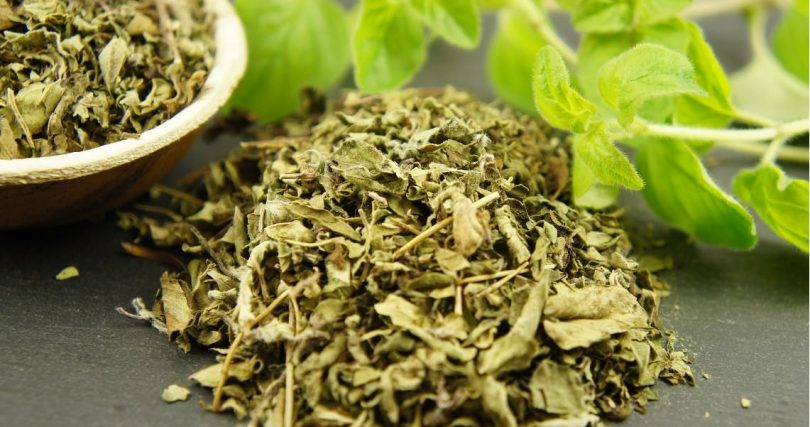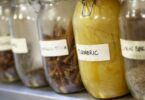Drying oregano is a great way of preserving flavor and keeping it ready for use anytime. It’s also a good way of dealing with issues related to abundance during a plant’s peak growing season.
Oregano is a favorite herb among many home cooks and chefs all over the world. It is also one of the easy herbs to dry and store for long periods, especially since it really does retain its wonderful scent and flavor.
There are different ways of drying oregano, though the most popular ones are air drying, sun drying, oven drying, and using a food dehydrator.
Before you start drying oregano, you have to harvest it.
LEARN MORE: How to Harvest Oregano – A Complete Guide
Most Common Methods of Drying Oregano at Home
Traditional air-drying method
This method, while traditional and been used all over the world for centuries, is not the best option. However, it can produce some nice results with very little equipment or effort. This method can work quite well when done on dry, hot days in places with very low humidity.
Air drying produces better results with sturdy herbs, such as rosemary and thyme. This isn’t so with tender leaves.
Tender herbs are at high risk of having poor flavor and color when dried. These also have a high chance of harboring fungal and mildew growth during the drying process. After all, the leaves do contain large amounts of moisture.
To avoid these problems with oregano, place bundles of fresh oregano sprigs inside a paper bag then air dry. The bags help keep the leaves from getting fully exposed to molds and mildew. It also keeps the leaves shielded from dust. Furthermore, the bag protects the leaves from the discoloring effect of direct exposure to light.
Oregano leaves are usually dried while still on the stem—though as the leaves dry, they fall off from the stem. This is another reason why using paper bags is a good thing. Indoor drying produces better-dried herbs. The herbs retain a good deal of the original color and flavor.
Steps to air drying oregano:
- Gather oregano sprigs in the morning just when the sun has dried the dew.
- Arrange the sprigs in a loose bundle tied securely together with twine or rubber band.
- Place the bundles inside a brown paper bag. It should be large enough to allow room for good air circulation inside the bag.
- Punch or tear holes all over the sides of the paper bag to allow air to flow in and out.
- Hang the paper bag upside down.
- The bags can air dry inside a room or on the porch. It can also be placed in a sunny area.
Oregano leaves usually take around two weeks to dry out completely. This depends on humidity and heat during the process.
Oven-drying oregano
This is a quick method that works for those who do not have a lot of time to wait or to spend on drying herbs. This is also a good method for drying individual leaves.
For the oven-drying method, the leaves are separated from the stems before drying. The dried leaves are flat, with most of the original color and flavor intact. This is good for herbs like oregano.
Steps to oven-dry oregano
- Place parchment paper on a metal baking sheet. This will keep the metal from reacting and discoloring the leaves.
- Wash and pat dry oregano leaves. Arrange in a single layer on parchment paper. Put some space in between the leaves.
- Place another parchment paper over this first layer.
- Repeat arranging oregano leaves on this 2nd sheet.
- Continue until 5 layers maximum is created.
- Place in a preheated 200-degree Fahrenheit oven.
- Leave the door of the oven slightly open to allow air to circulate. Otherwise, the leaves might get burned. Too much heat might also cause a loss of flavor.
- Leave the leaves in the oven for 30 to 45 minutes. Every 15 minutes, stir or flip the leaves for even drying.
- After 30-45 minutes, turn the heat off but leave the oregano in the oven until totally cooled.
- Remove from the oven.
The oven temperature can be lower. It will take a long time though for the leaves to dry completely. The heat from the gas pilot light can be enough for drying but it will take about 24 hours or so.
For oven drying, choose flat leaves of the same size. Leaves of different sizes dry up at different rates. This might result in burnt small leaves and improperly dried large ones.
Drying oregano in a microwave
This is the quickest way to dry oregano. Microwave drying is also good for tender herbs like basil and mint.
Steps
- Place 2 layers of kitchen or paper towels on a microwave-safe plate. Do not use recycled paper towels because these may have fine metal fragments. The metal fragments may arc and catch fire during the microwaving process.
- Remove the leaves from the stems.
- Arrange the leaves in a single layer on the paper towel.
- Cover the leaves with another layer of clean kitchen towels or paper towels.
- Microwave the leaves on high power for 1 minute.
- Continue microwaving in 20-second bursts.
- Check the leaves in between microwave cycles to see if completely dry. Bend the leaves. If they easily crumble, the leaves are done.
Drying oregano in the food dehydrator
This is the best method of drying oregano. It is the fastest and easiest way to get the best quality dried herbs. Even the most moisture-rich herbs dry quickly and evenly, with much of their original flavor and color intact.
READ ALSO: Which Food Dehydrator is Right for You
Steps
- Wash and pat dry the oregano leaves.
- Arrange the leaves on the dehydrator tray, single layer with some space in between.
- Arrange the trays in the dehydrator so that there will be good air circulation between the trays and between the leaves.
- Set the dehydrator on the lowest setting. The suggested temperature is between 95 degrees Fahrenheit and 115 degrees Fahrenheit. It will usually take around 4 hours, depending on the number of leaves to dry and the humidity.
- Check the herbs periodically. Use the shortest time setting possible on the food dehydrator. If not yet dry, set on bursts of dehydrating cycle and check between cycles.
How To Store Dried Oregano
No matter what method was used in drying oregano, it has to be stored properly. Check whether the leaves are totally dry, without any drop of moisture in them. Moisture will cause the dried leaves to have mildew and fungus.
The leaves are dry once they fall off the stems if air-drying, easily slide off and crumble from the stem when oven-drying, or brittle and easily crumble when microwave-drying or dehydrating.
The dried leaves can be stored whole, roughly crumbled, or powdered. For powdered dried herbs, a mortar and pestle or a spice grinder work great. To get even finer powder, pass the powdered oregano through a fine sieve.
The flavor can dissipate over time. An airtight container can help preserve the flavor for longer periods. Dried leaves stored whole also retain flavor longer than powdered dried oregano leaves.
Whole leaves can be easily crushed or powdered right before using to release more flavors. Hence, it might be better to store the dried leaves whole.
Whether whole, crumbled or powdered, dried oregano must be stored in an airtight container. The container should in a cool place and away from direct sunlight and heat sources. Heat and sunlight can affect both flavor and color.
A few last tips for the best results
Any part of the herb can be used for drying. The leaves are most widely used because this is where most of the flavor is contained, especially in oregano.
Drying causes the flavor to evaporate with oils and water in the leaves, even with the best drying method. Hence, it is highly recommended to choose the best leaves to get the best flavor.
The most flavorful oregano leaves are harvested just before the first buds start to open. After flowering, the leaves quickly lose flavor. The best time to harvest is in the morning, right after the morning dew has evaporated. Gathering wet leaves essentially translates to adding more moisture that can negatively affect the drying results.
Wash the leaves and dry well. Pat dry with kitchen or paper towels but do not rub. Rubbing bruises the leaves and cause more flavor to be lost during the drying process.
Here’s the final tip—never choose leaves with any deformities or spots. Deformed leaves do not have the best flavor. Spots might harbor fungi, molds or infestations. These can cause the dried herbs to get moldy during storage.





